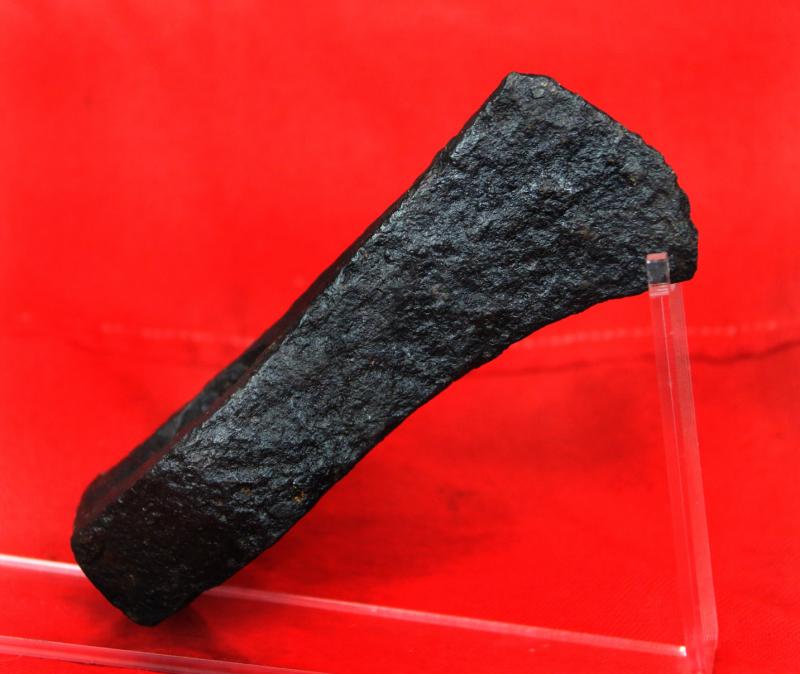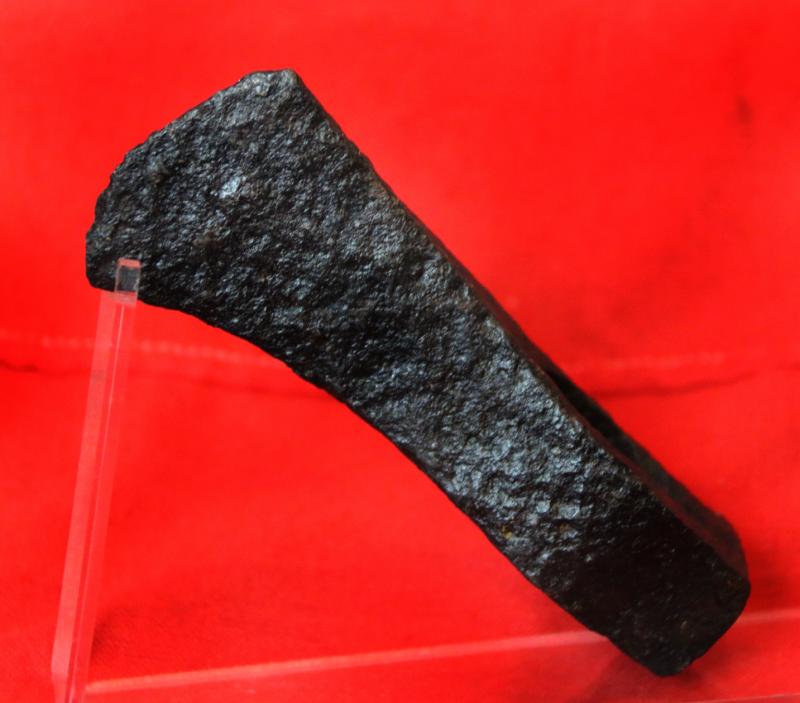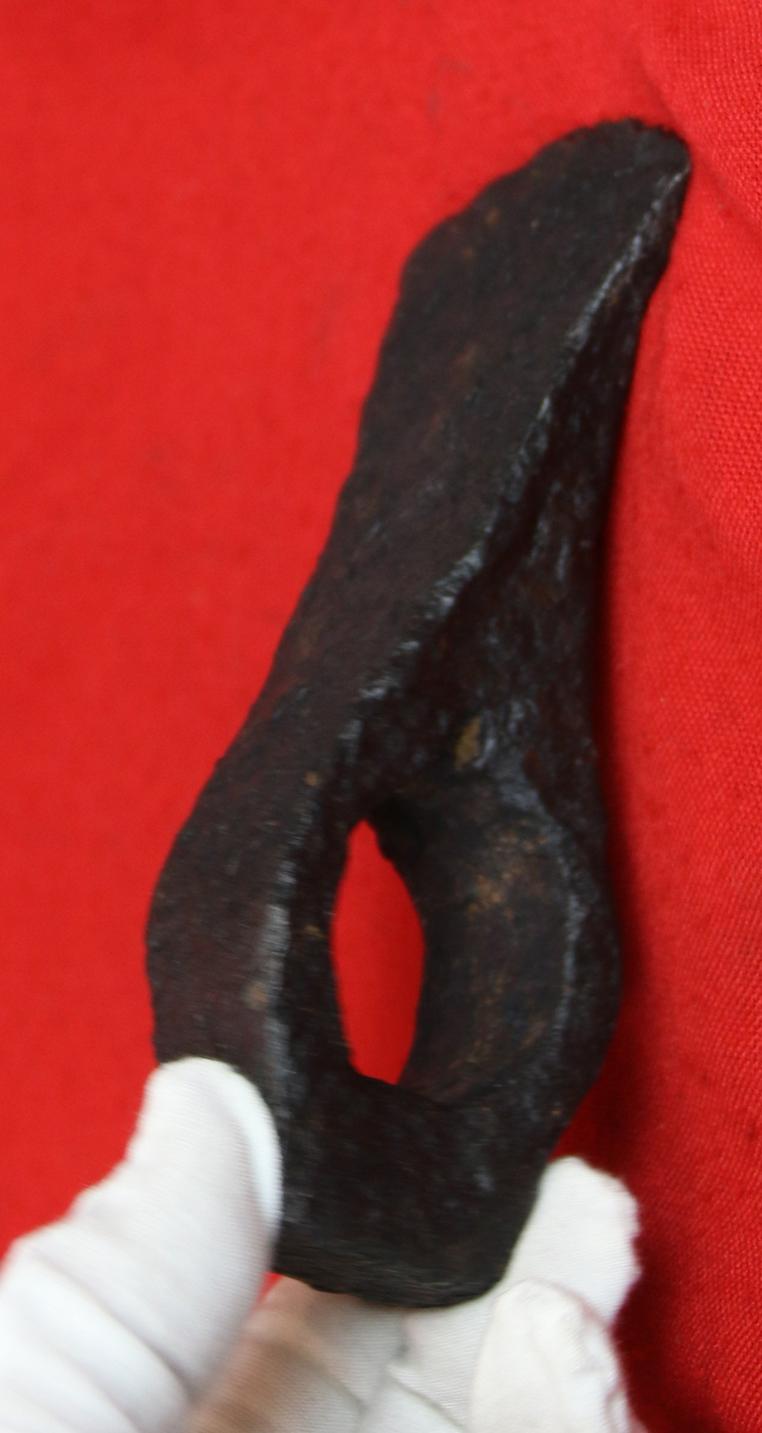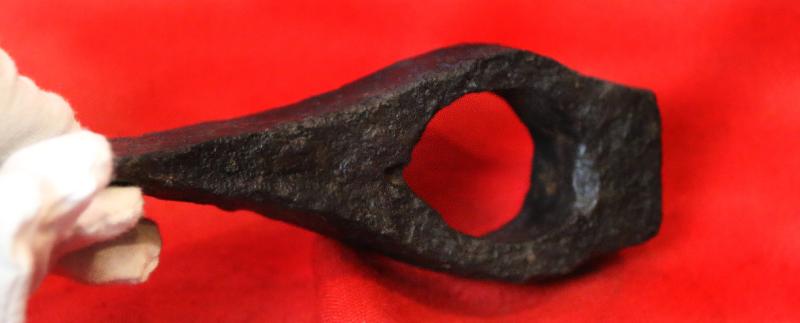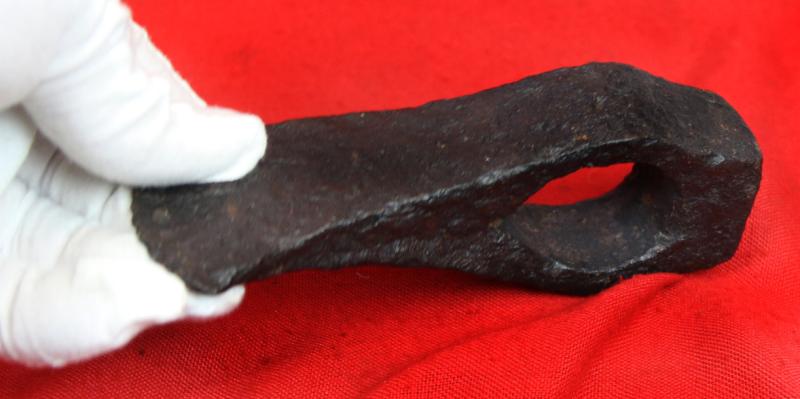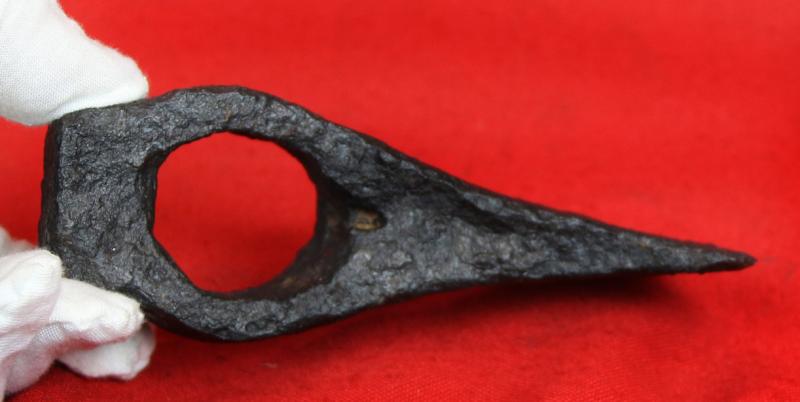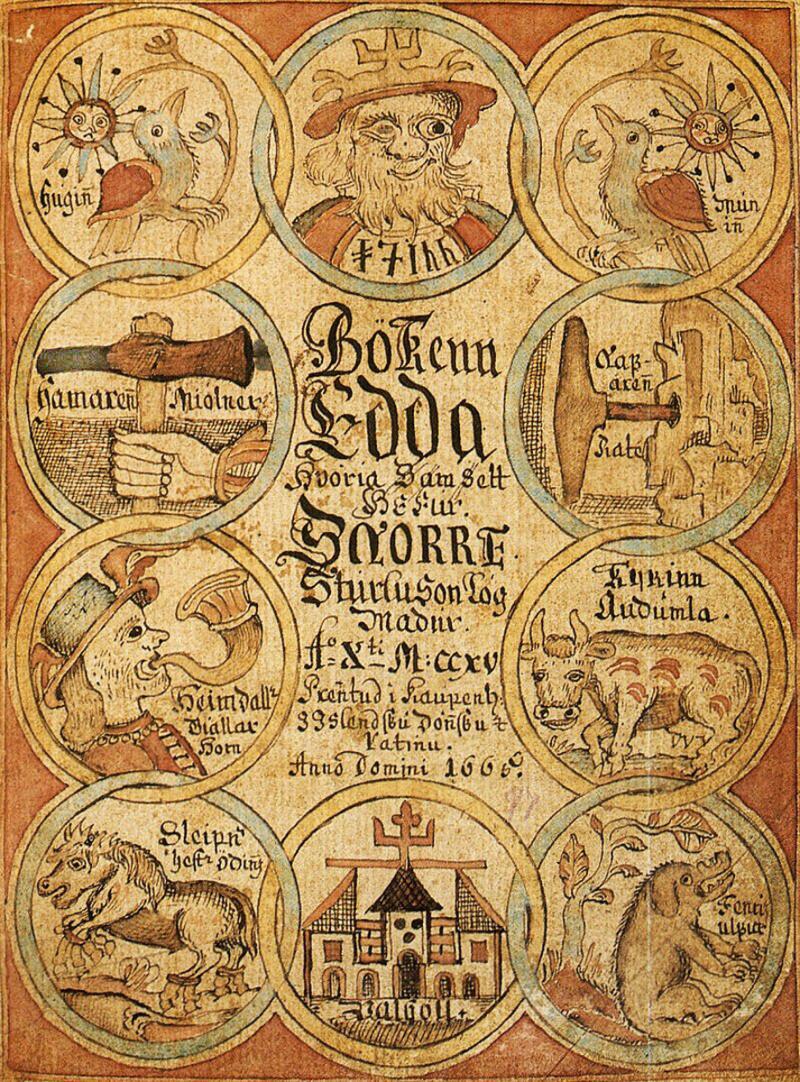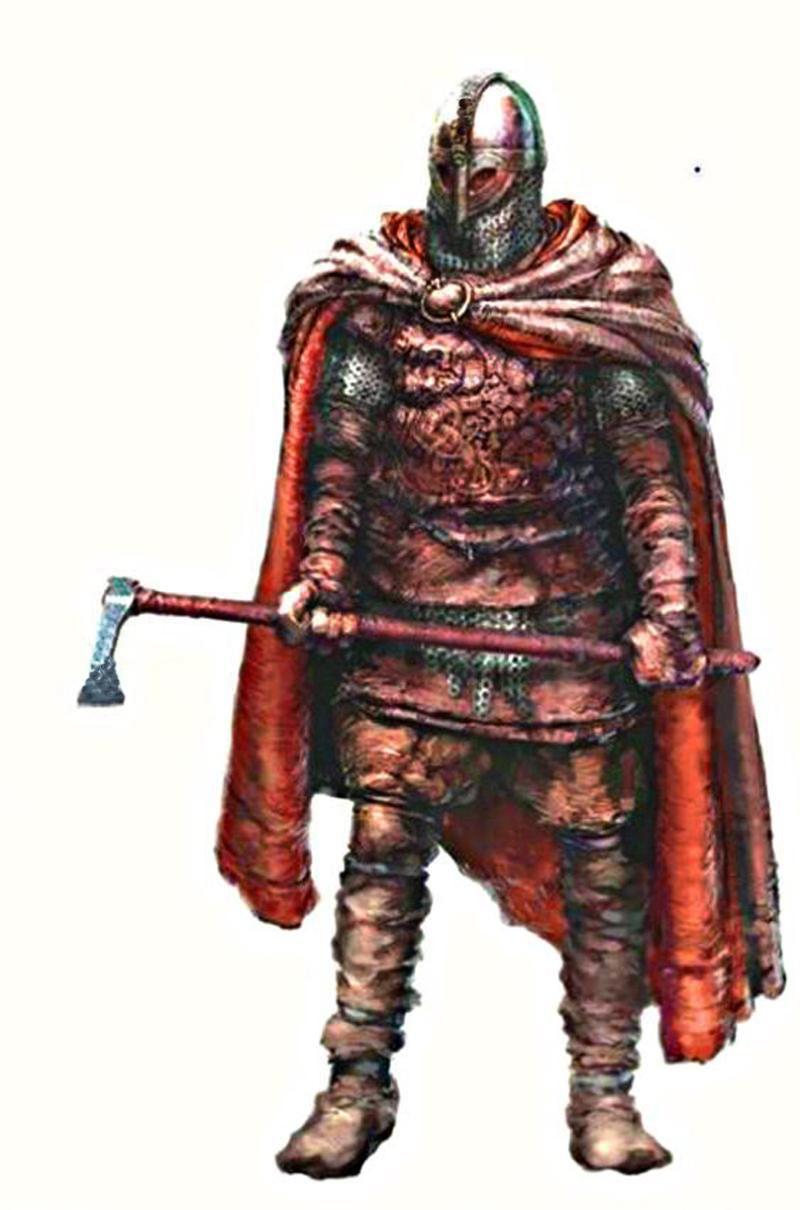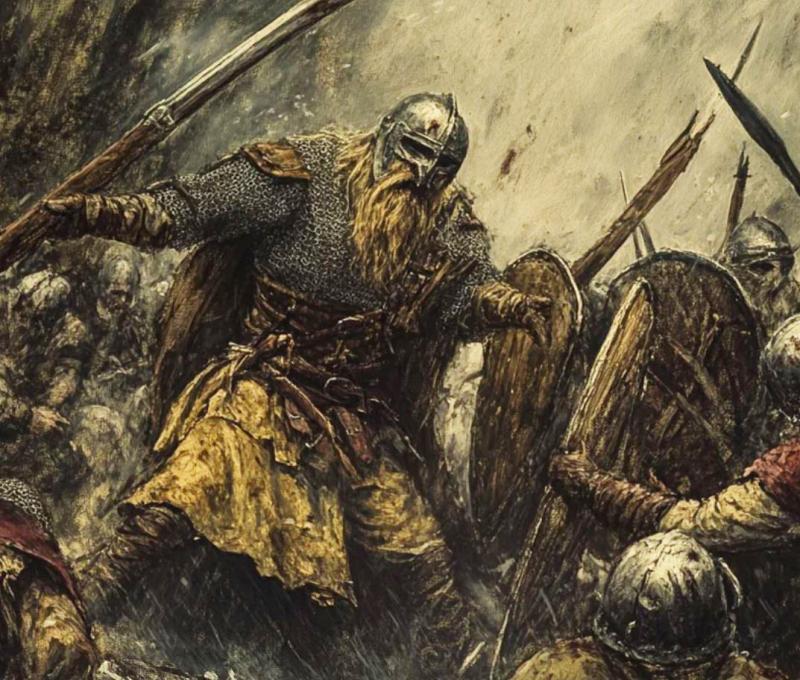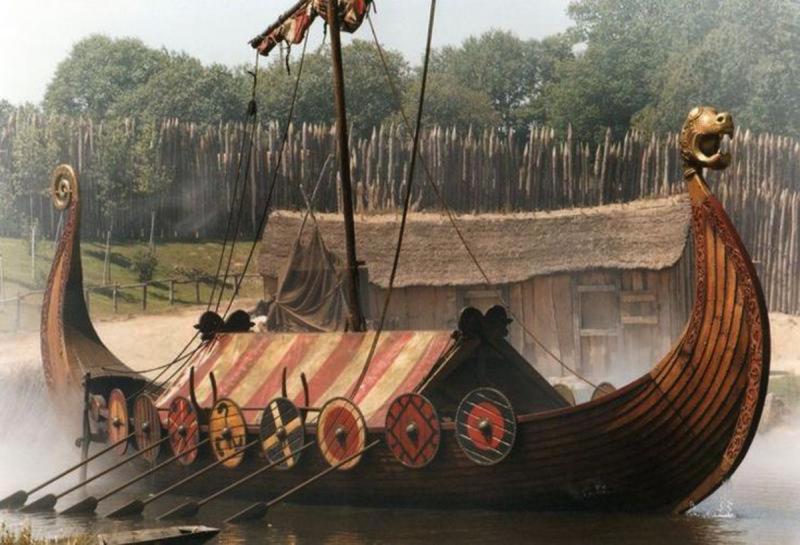A Rare, Original, Ancient Viking Iron Battle Hammer-Axe. Around 1100 to 1200 Years Old. Almost Every Viking Warrior Used the Axe or Spear As Their Primary Combat Weapon. Swords Were the Prerogative of Kings or Earls {Jarls} A South West England Find
An original English Viking site find in the 1870's, but not recorded as to where in the South West of England {likely Somerset} it was actually recovered.
In 836 King Egbert of led an army to Carhampton in West Somerset against a Viking army from 35 landed long-ships, in the ensuing battle the King Egbert’s army was defeated and withdrew, leaving the Vikings to raid and plunder all the surrounding countryside. The suffering of the Anglo Saxon peasantry was terrible and lasted for many decades. It wasn't until 878 that an army under King Alfred fought and defeated Viking King Guthrum's army at Edlington in Wiltshire and they fled. It wasn't until 914 that the vikings returned once more to Somerest but they were once again defeated.
Renown scholar Alcuin of York was back at Charlemagne's court by at least mid-792, writing a series of letters, regarding the brutal Viking raid at Lindisfarne, to Æthelred, to Hygbald, Bishop of Lindisfarne, and to Æthelhard, Archbishop of Canterbury in the succeeding months, dealing with the Viking attack on Lindisfarne in July 793. These letters and Alcuin's poem on the subject, "De clade Lindisfarnensis monasterii", provide the only significant contemporary account of these events. In his description of the Viking attack, he wrote: "Never before has such terror appeared in Britain. Behold the church of St Cuthbert, splattered with the blood of God's priests, robbed of its ornaments.
The Vikings began arriving en masse with armies intent on conquest. These armies were led by Ivar the Boneless, Halfdan, and Ubba, three of the sons of Ragnar Lodbrok, who had been killed by the Northumbrian King Ælla. The first English city to fall to the invaders was York, conquered in 866. The Northumbrians tried in vain to retake the city, and King Ælla was killed in the process. One-by-one, other Saxon realms capitulated until virtually all of north and eastern England was under the direct control of the Danes.
At this point, the strongest Anglo-Saxon kingdom was Wessex, and upon the death of its king Æthelred, Alfred succeeded the throne and took the fight to the Vikings in England, who had begun annexing huge chunks of Mercia, an ally of Wessex. Alfred’s initial campaign against the Vikings was, however, a complete failure. Anglo-Saxon military tactics and defenses were incapable of dealing with Viking raids, and Alfred was eventually forced into hiding in the Somerset Marshes. The Vikings in England had succeeded in opening up the whole of Anglo-Saxon England to their mercy.
In 878, King Alfred came out of hiding and met with the lords still loyal to his cause. During his time in the Somerset Marshes, he had carefully planned a major counter-offensive against the Danish Viking army under Guthrum. Alfred’s campaign was successful, and Guthrum’s army was beaten, first in the field at Edington and then starved into submission at Chippenham. Several years later, a boundary was established, dividing England in two, with one half under Anglo-Saxon control and the other half, known as the Danelaw, under the control of the Vikings.
King Alfred organized better defenses, as well as a powerful free-standing army better equipped to deal with Viking tactics. As a result, subsequent raids and a major invasion attempt were thwarted. The Vikings who were part of this invasion attempt either ended up settling in Danelaw or sailing to Normandy and settling there.
Beyer, Greg. "The Vikings in England (Or were they Danes?)" TheCollector.com, March 11, 2023, https://www.thecollector.com/danes-or-vikings-in-england/
Title page of a late manuscript of the Prose Edda written by Snorri Sturluson (13th century), showing the Ancient Norse Gods Odin, Heimdallr, Sleipnir, and other figures from Norse mythology, plus the legendary axe hammer.
The Tjängvide image stone with illustrations from Norse mythology
By Berig - Own work, CC BY-SA 4.0, https://commons.wikimedia.org/w/index.php?curid=3682858
Showing axe hammers in combat and a Viking longship read more
5 3/4 inches x 2.1/4 inches x 2 inches at the socket width.
Code: 25845
1175.00 GBP

